Berinag Tea : A Tea Connoisseur’s Pick
“Lehja thoda thanda rakhiye Janab, Garam to hame sirf chai pasand hai”—Anonymous
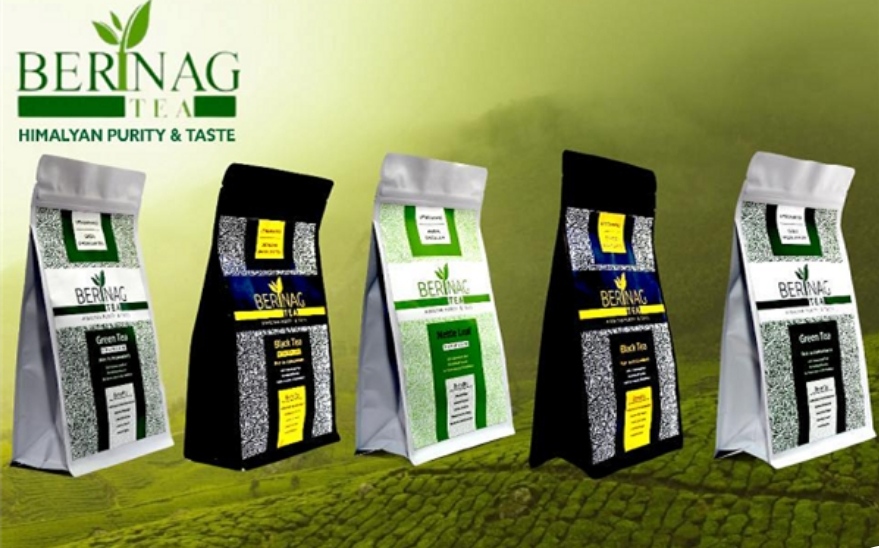
By Colonel Satish Singh Lalotra
Nestled in the mighty and snowy ranges of our northern frontier, are some of the most amazing miracles of nature waiting to be unraveled in their entirety by an avid traveller. “Berinag” safely ensconced in Pithoragarh district of our northern state of Uttrakhand is a tehsil. The suffix of name ‘Berinag” is Nag which literally means snake. The region is well known for its many important ‘Nag devta”temples (snake God). The summer of 2019 saw me and my family pack up our bags, and leave the sweltering hot plains of our country for a short sojourn with our age old northern frontier i. e. the Himalayas. This is one such region of our country which will leave you ever mesmerized by its varied hues in terms of people, places, rich flora and fauna strung all over the place. Having served in this part of India while in service as a young Capt of impressionable age I thought it prudent to revisit it and soak in the myriad hues with the advantage of the hindsight.
My itinerary involved a wide circuit of road travel starting from the Terai region of Uttrakhand going up all the way up to Pithoragarh, Patal Bhuvneswar of Kumaon, and crossing over to Gwaldham of Garhwal region and finally ending up at Badrinath Dham. Having kept a wide leeway to swivel either way on the route to some enchanting place which might capture your attention I had accordingly prepared myself. Sure enough I soon found ‘Berinag’ while having completed our Patal Bhuvneswar trip by serendipity. ‘Berinag ‘incidentally falls on the road from Gangolihat to Choukri. While driving down the road I happen to find the milestones etched with ‘Berinag’ on them. Flood of memories brought me to the time when I used to visit this place while enroute to Joshimath using this route as an alternative one. About 24 kilometers from Patal Bhuvneswar, Berinag was just 55 minutes driving time and that firmed me up to look /see the various Tea estates at that place which used to be the standard bearer of ‘Kumaon Tea ‘ popularly known at that time by the moniker ‘Berinag tea”.
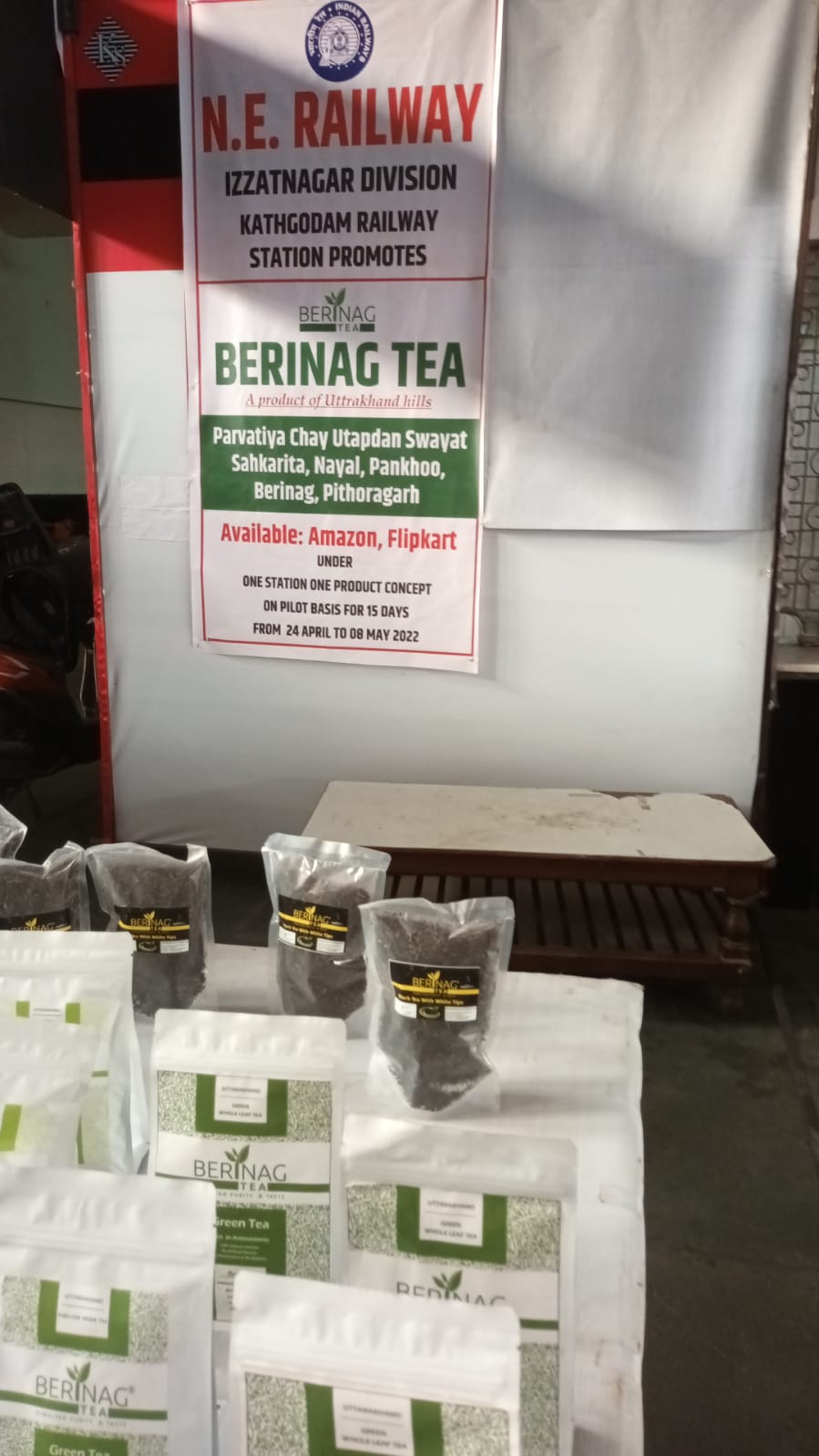
‘Berinag tea’ during the period preceding early 90s was famous for its rich aroma, flavor and colour and had planted its flag of popularity firmly in Europe especially England. This popular tea was made from the leaves of a wild plant which grows in many locations in the high Himalayas. It is now only grown in areas surrounding Berinag and Choukri block of district Pithoragarh. I happen to take my taxi near to one of the largest tea estates along the road Gangolihat- Berinag-Choukri near a village Pakho. Kumaoni women and men in their colourful attires were busy plucking tea leaves and storing in their wicker baskets piggy backed with them. Struck a conversation with few of them, though they were initially reluctant to speak, being busy in their plucking of tea leaves. Opening up a little after some cajoling I came to know that their day starts with the crack of the dawn. Most of these tea pluckers are local Kumaonis from neighbouring villages of Berinag, unlike the tea gardens of the NE where in the labour force is from WB, Odisha, Chatisgarh, Jharkhand and Bihar. As per them with breakfast tucked in their bellies early morning, specific areas are earmarked for them to pluck the fresh leaves every day.
The tea leaves which are generally plucked in Pakho/Berinag are meant for processing ‘Green tea (whole leaf tea), blacktea (Orthodox whole tea leaf) and Nettle leaf tea. In case of loose Green tea leaves they are processed organically thus giving an advantage over the others in terms of quality. These low grade leaves are usually picked, processed and packaged by ‘Tea masters”. As for the benefits of ‘Green tea’ of Berinag, it is a 100% natural, pure with no artificial flavours as also with no additives or preservatives in it. As for this tea’s effect on the body as such it has been noted that it is rich in antioxidants, hence anti-cancer in nature. It lowers down the BP, and is anti-aging in nature too. As far as the Black tea (orthodox) is concerned these tea leaves are harvested in the traditional way with trained professionals, thus ensuring they extract the finest quality of leaves every single step of the way. Orthodox tea preparation is comparably more tedious and time consuming and is again full of antioxidants thus anti-cancer in nature. It too lowers down the BP, improves the heart rate and strengthens a human gut to the fullest.
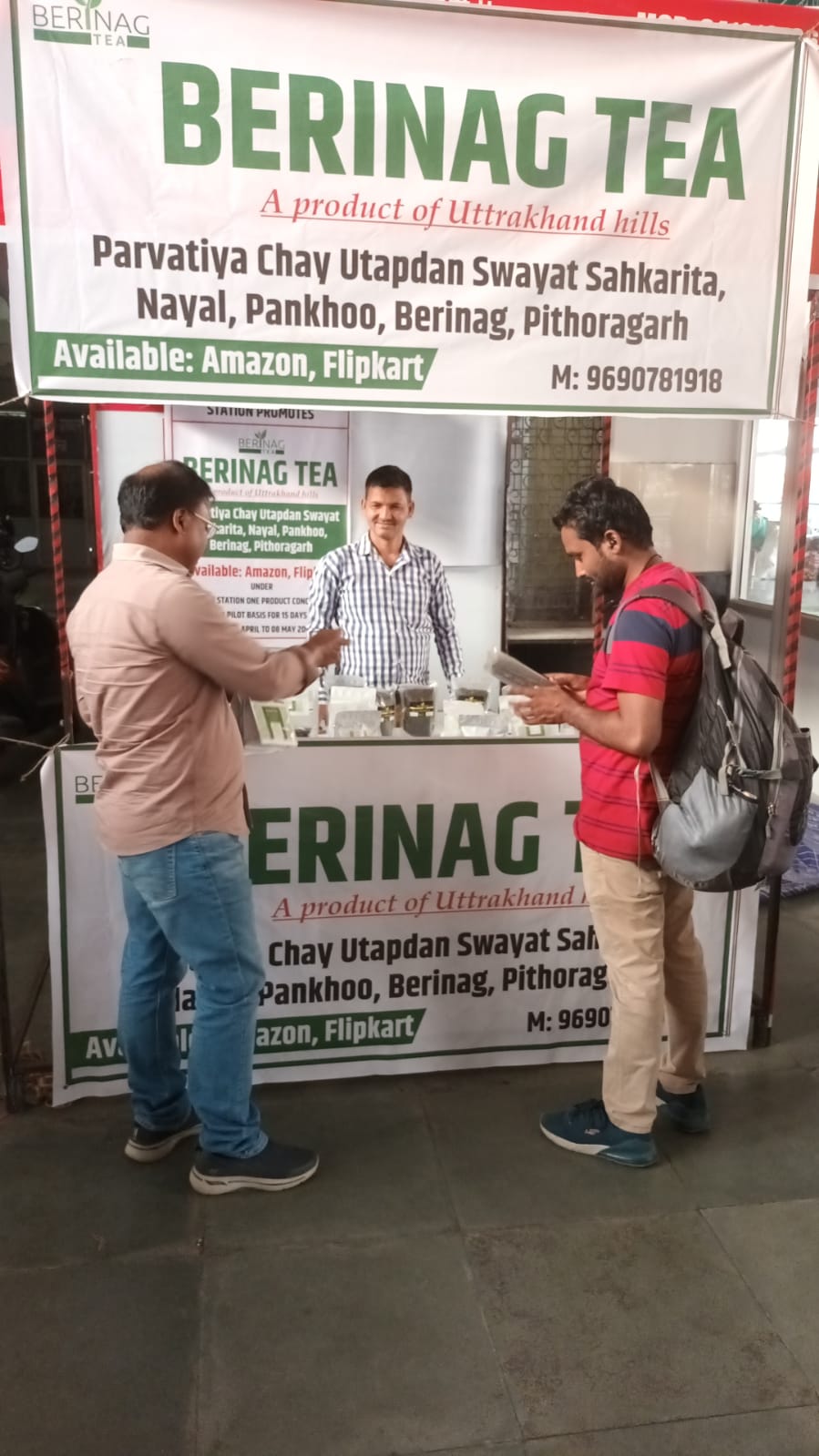
Nettle leaf tea on the other hand is also known as ‘Bichughas” in local Kumaoni language and ‘Kandli’ in Garhwali lingo thus having its spread far and wide in the entire Uttrakhand. It is again a whole leaf tea with no artificial flavours to boost its ergonomic value. This tea incidentally relieves seasonal allergy of all kinds, lessens joint pains, improves skin and hair growth and gives an added boost to your immunity. Now a little bit of information on the type of tea leaves for a discerning reader of this article. The two types of tea leaves which lend themselves for processing for making finest quality of tea are the ‘Whole leaf tea & Broken tea leaf. As the name suggests whole leaf tea preserves the entire tea leaf during production. This tea takes the longest to infuse and often said to be possessing quality and depth.
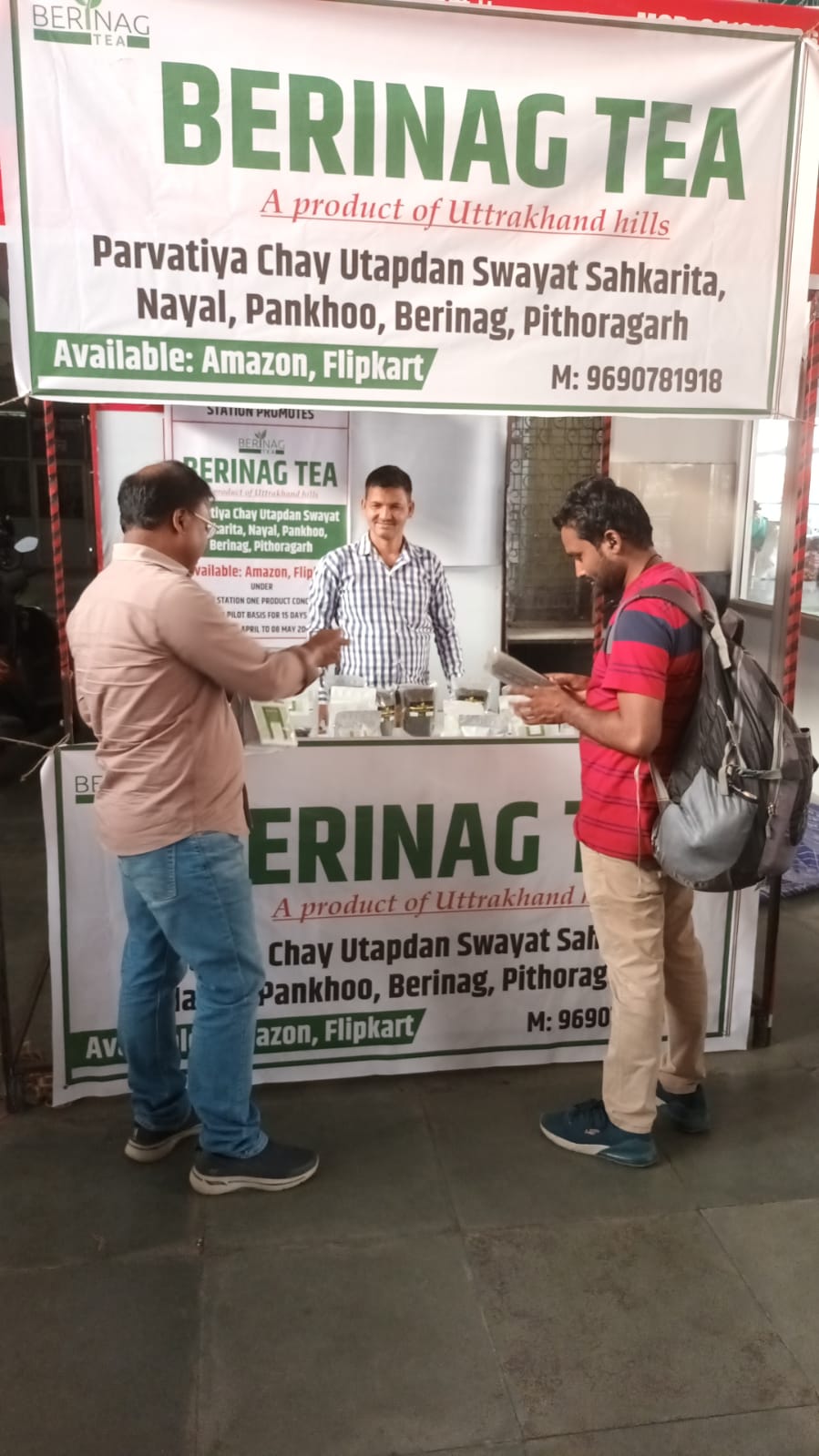
An avid reader must be wondering from where I mined all this information? Well to be honest I was lucky enough to meet one Mr Vinod Karki, son of an ex-serviceman while on the said tour to Berinag who by the sheer dint of his hard work is now a synonym in entire Uttrakhand as a game changer for the destinies of hapless Kumaoni people. A botanist with a degree in M. sc in Botany, an entrepreneur, a nature conservationist, an educationist and last but not the least a successful tea planter, VinodKarki is a typical role model for hilly youth to stop chasing their dreams in the metro cities of India and instead look towards their own strengths in the hills of Kumaon.
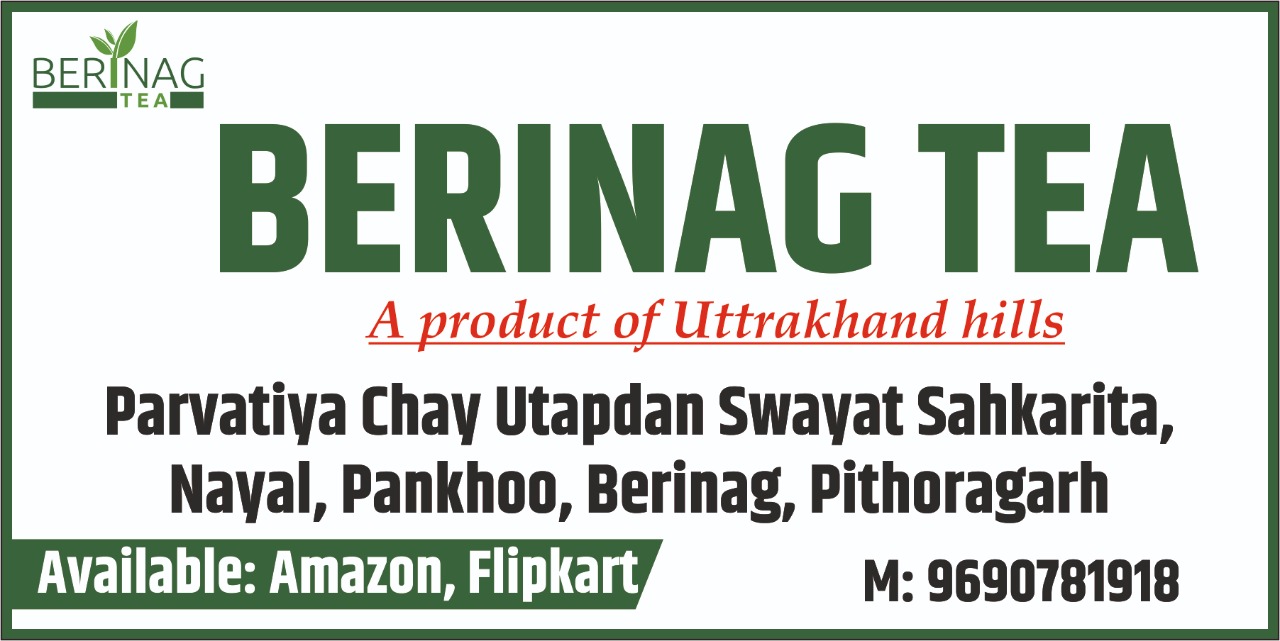
In Vinod Karki, Uttrakhand has seen its first business cooperative venture in the area of tea plantations which was hitherto unknown for such out of the box thinking. In an era where to get even a handful of people around your thinking and act accordingly, Vinod’s efforts have been path breaking venture since he has been able to cobble together 30 odd small farmers to form a co-operative society with the name as—‘Parvaitya chai utpadan swayat sahakarta’with the active support of ‘Tea board of India’ Kolkatta. He has been able to put together 8. 75 hectares (appx 21. 46 acres) of land from these 30 odd farmers which include about 4. 5 acres of his personal land. With this as a starter, Vinod has been able to establish a mini tea factory in his own premises with the loan granted from the MSME(Micro small and medium entreprises) sector along with a packaging unit in the tea gardens. He told me that on an average his cooperative tea venture has been able to collect 300 to 400 kilos of fresh tea leaves every day with immediate processing of these tea leaves to obviate their getting spoilt/rotten from the time they are plucked off by excessive moisture present in the atmosphere.
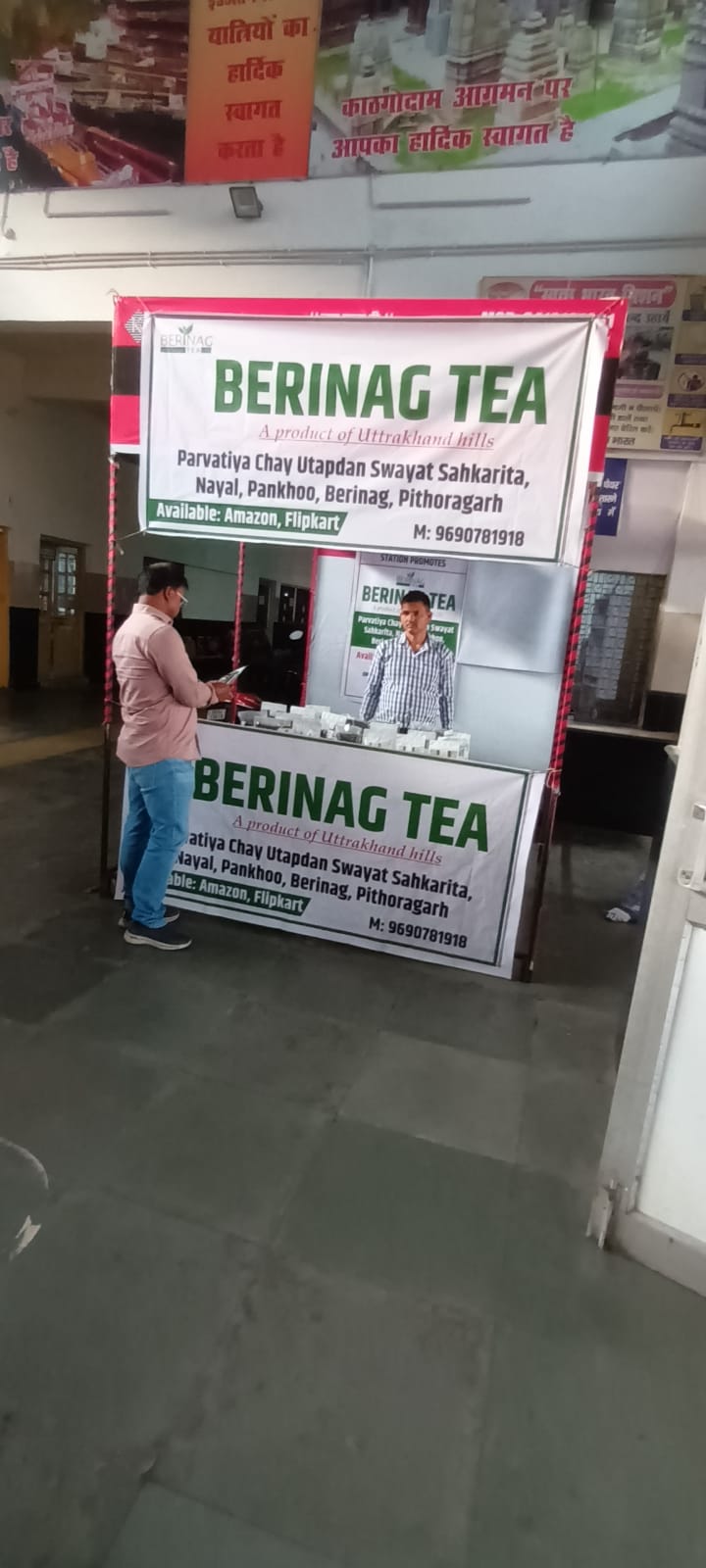
In fact his venture of ‘Cooperative tea ‘was the brain child of late Mr RS Tolia the Chief secretary of Uttrakhand in the year 2011 who suggested to take some land on lease for about 7 years from various farmers, plant tea bushes in them, prepare the entire gamut of tea production and thereafter hand over the said land to its original owners. For Vinodkarki it was a dream cum true. As of today the area of ‘Pakhoo and Berinag has about 09 small and 07 big tea gardens with an established capacity of tea plucking of about 8000 kilos of tea last year alone. His cooperative has been able to sell processed tea with an amount of Rs 30 lakhs in the open market last year. The packaging unit being established in situ, the task starts earnestly in the tea garden for packaging the said tea which is either in 100 grams of sachets meant for marketing through the online platform of Amazon and flipkart or else in packets of 500 gms/1000gms for local consumption.
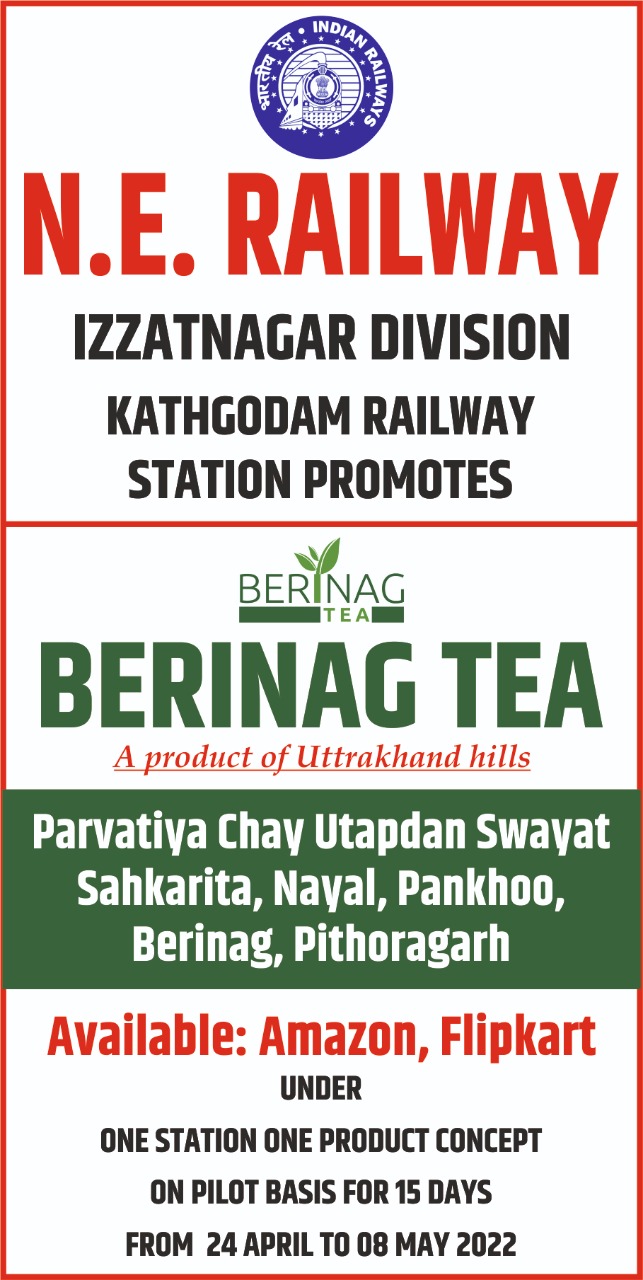
Though the tea leaves are collected by the tea cooperative society ‘Parvatiya chai utpadan swayat sahakarta’ from their own tea gardens as mentioned earlier, it also ventures out to buy the same from ‘Uttrakhand tea development board’ to augment its shortfall if any to the burgeoning demands of tea connoisseurs the world over. Buying at a modest price of about Rs 40/ per kilo from ‘Uttrakhand tea development board’ his joint venture plans to rake in about 20 to 25% of profit margin on the processed tea from its mini tea factory which is quite a handsome amount. As per Karki his main concern remains however to get new and fresh leaves plucked by his labour force, since within a fortnight’s time new tea leaves sprout from the tea bushes thus making his job an always ‘On the toes type’. Though Vinod Karki has been able to carve out a niche for himself and his band of dedicated Kumaoni farmers, he still has lots of grey areas and vast ground to cover in terms of the following—
(1)There are no dedicated marketing platforms for marketing his ‘Berinag tea’ to rest of India except for the now available Amazon and flipkart e-shopping. Though his tea has touched foreign shores to include England, Dubai, France and rest of Europe, Uttrakhand government has been found woefully inadequate to rope in good platforms for doing its bidding in terms of established tea outlets.
(2) The area of Berinag, Pakho, Nayaletc doesn’t have good road networks which leaves much to be desired for free movement of tea and its associated knick knacks to the hinterland of India.
(3) Special tax holidays should be planned for tea planters in the region of Uttrakhand to give a boost to this fledging tea industry.
(4) More farmers should be roped in this region to form tea cooperatives in order to enable to make this venture a self-sustaining model for the rest of India to emulate.
(5) With Pushkarsingh Dhami in the driver’s seat as the CM of the area he should instruct the government to recast its old look into a newer one and do solid hand holding of his impoverished farmers by focusing into a new area of interest i. e. ‘tea planters cooperatives’.
(6) Formation of ‘Tea planters cooperatives ‘will reverse the hill migration too in the right earnest. Tea planters cooperatives will boost local economy, conserve nature since even the wild animals do not come near the tea plantations, will jack up eco-tourism etc.
Buoyed by the success rate of Vinod Karki and his band of entrepreneurs IIT Roorki awarded 1st prize to his venture in this year march via ‘ManchTantra’ a work presentation in ‘Samarathya -2022’ organized by ‘Unnat Bharat abhiyan’. His venture has been appreciated by the DRL, Pithoragarh and Director MSME, Pithoragarh. I wish more follow the path chosen by Karki and his band of farmers and rewrite the destiny of this region.




